As our first full day wound down, the shadows lengthening in front of us, we made our way to the final temple. The TianHouGong Temple, or Heavenly Empress Temple, is dedicated to the sea goddess Mazu. Built in 1196, originally named Shunji Temple, this is now the oldest and largest temple dedicated to TianHou, or Mazu. In fact, the temple existed long before her and witnessed the founding of this still youthful religious sapling, independent of Daoism or Buddhism.
TianHou Temple was positioned on the edge of old Quanzhou, right inside the defensive walls of the city. In fact, this is one of the gated entrances to the city, so the Shunji Temple would have been one of the first things visitors to old Quanzhou from 1368 to 1644 would have seen.
Threats to the international markets of Quanzhou must have been no joke and neither are the defensive walls meant to defend against them. A double wall, a moat, towers, and cannons provided a layered defense. Look at the thickness of the structure! The size is comparable to the temple grounds.
I can imagine pirate fleets hammering away at the walls. Made me think of James Clavell’s Taipan, his stories of foreign and chinese traders set in the 1840s. Now if you’re looking for a euro-centric book to compare to The Silk Roads, I cannot think of a better choice. Be prepared for heavy stereotyping all round, so fair warning.
Maybe it is the southern climate, perhaps the proximity of competition, or a readier access to funds, but Quanzhou temples go harder on sculpture, on dragons, on colors than the temples I’ve seen in other parts of the country. The look is distinctive and striking, crossing Daoist, Buddhist, and Tianhou. Carved dragon pillars, red, white, and green tiled eaves, one can get lost looking at the details.
This sea goddess protects sailors and fishermen, really anyone making a sea voyage, and as such, has temples ranging up and down China’s coastal cities. But Quanzhou is where Mazu originated and belief in her is the strongest.
Mazu was without doubt a real person, name Lin Mo, who lived in the area around Quanzhou. Born in 960, she died at 27, in 987. She is described as intelligent and wise from a young age, good at swimming, proficient in medical theory, and is also described as “having the ability to predict celestial phenomena”. She reportedly died rescuing sailors who were shipwrecked, after which her fame spread and locals began invoking her protection for safe voyages. I think of her as a lifeguard who went to medical school, who then died tragically in the service of others.
Her popularity and influence spread rapidly, because by 1156, less than 170 years later, the imperial dynasties were recognizing Mazu as a religion and granting her ever-grander titles. Madam to Princess, to Heavenly Princess, to Heavenly Queen, and finally to Heavenly Goddess. This last one established her as a sea goddess.
Becoming a goddess that hundreds of thousands actively worship in just decades, recognized by the head of government in less than 170 years! This all happened less than 1000 years ago. I pause to think about how quickly myths can grow and become so indispensable to people’s lives. But it isn’t so rare, really. Catholic saints are canonized regularly, already 14 in 2024 (as of December). Are these not immortals? Are we then not all?
This large painting located behind the entrance gate has a fun story behind it, the Eight Immortals, or Ba Xian (八仙). I couldn’t find any connection to Mazu except that they are all in a boat, but that is also a defining characteristic of Quanzhou’s temple culture. Buddhist, Daoist, Mazu, they all borrow, swap, and share motifs, characters, relics and artifacts, you name it. A refreshing, genial kind of competition and cooperation, at least from what I can see.
Let’s see if we can name these characters correctly. Big thanks to a Mae Hamilton for her writing on the subject in 2022. Starting from left, the lady is He Xianggu, we recognize her lotus flower, believed to improve physical and mental health. The white beard next to her is Zhang Guolao, because he is always shown with a bamboo fishing trap. Next to him in the red robes is probably Cao Guojiu, the patron of acting and theatre.
To his right, with the cane and gourd, is Li Tieguai, and his story is really wild. A handsome guy with a short temper, Li studied under the Laozi, who taught him how to leave his body and ascend to Heaven. Li forgot to come back before his wife, believing him dead, had his body cremated. He was forced to inhabit the body of a homeless man, so he became the champion of the needy and the ill.
The gentleman in the black robes with the sword is Lu Dongbin. He is a popular character, a poet during his life, a sexual and romantic deity. Don’t know why he has the sword… The bare-bellied chap is Zhongli Quan, a Han general who took up Taoism and can use his fan to revive the dead and create gold and silver out of nothing. Behind in white is Han Xiangzi, a poor student of Confucianism and Buddhism, who dropped out to be a Taoist. He has a magical flute. Finally, flying on the crane is Lan Caihe, who is described as an intersex person, a man who believed he was meant to be a woman. Lan got very drunk once and flew to heaven on a crane, as one does.
I feel proud that I will recognize these characters in future travels. Now you will too. 😊
You can research Mazu and somewhere will say Mazu is Daoist, and somewhere else will say Mazu is an independent group. I couldn’t tell from looking around, and TianHou certainly didn’t say. The look is distinctive, I’ll say that. Never did I feel more lost in an eastern temple. The task of learning who all these characters are and how they all relate to each other might be asking too much of myself.
These temples are asked to serve multiple functions, as active places of worship, businesses that need to sustain themselves, and as museums caretaking crucial pieces of history. I do appreciate when a temple takes more than one of these seriously, as TianHou does. Without the small gallery shown below, much of the history I was able to relate here would be unknown to me. Google all too often isn’t much help. Having explanations for laypeople, and in English too, is really conscientious and appreciated. Much of what I’ve related above was collected from these walls.
We retired to the hotel, exhausted, but happy with the events and discoveries of the day. The breadth and depth of China’s spiritual world and history got a lot deeper for me today.







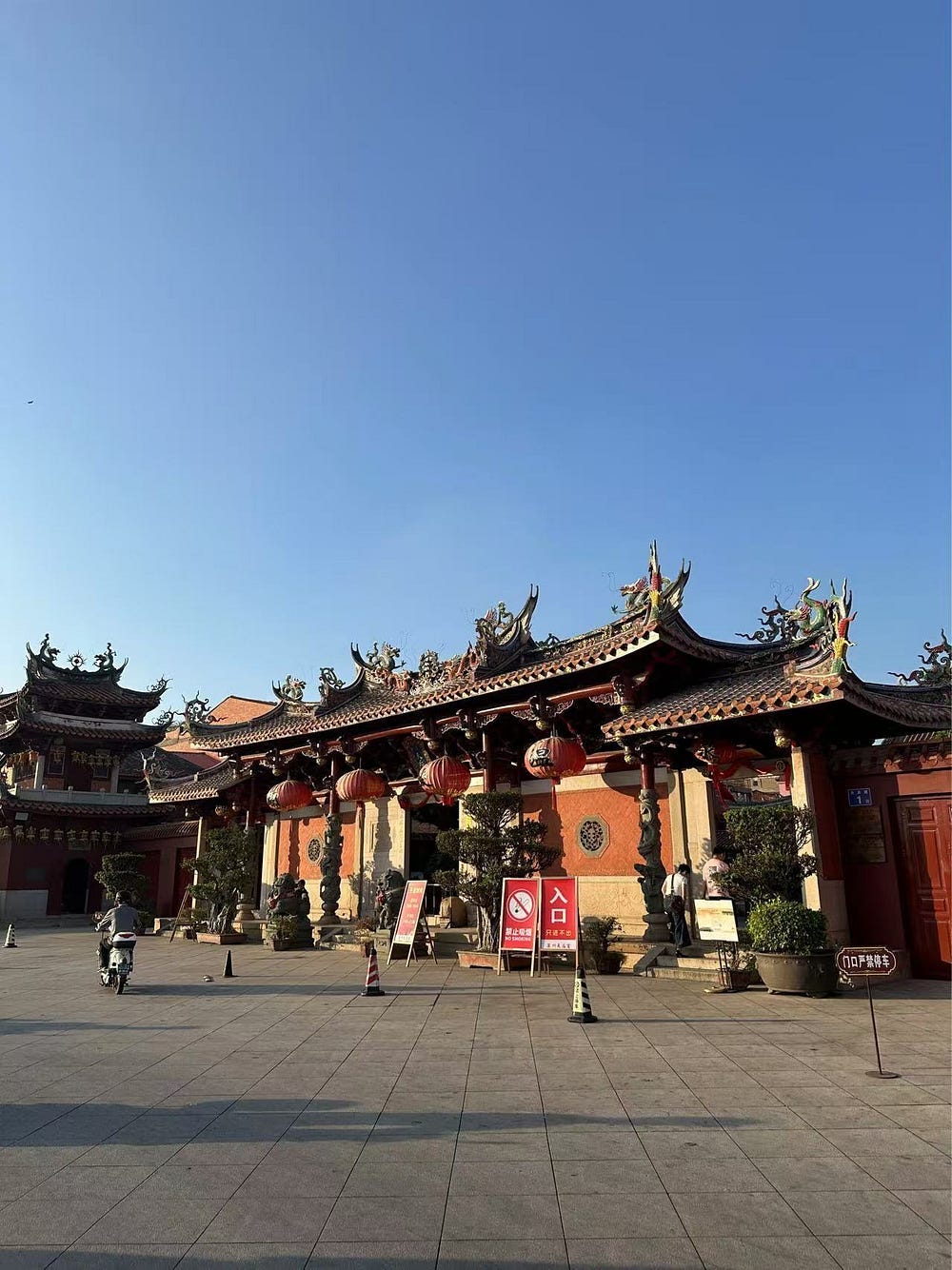
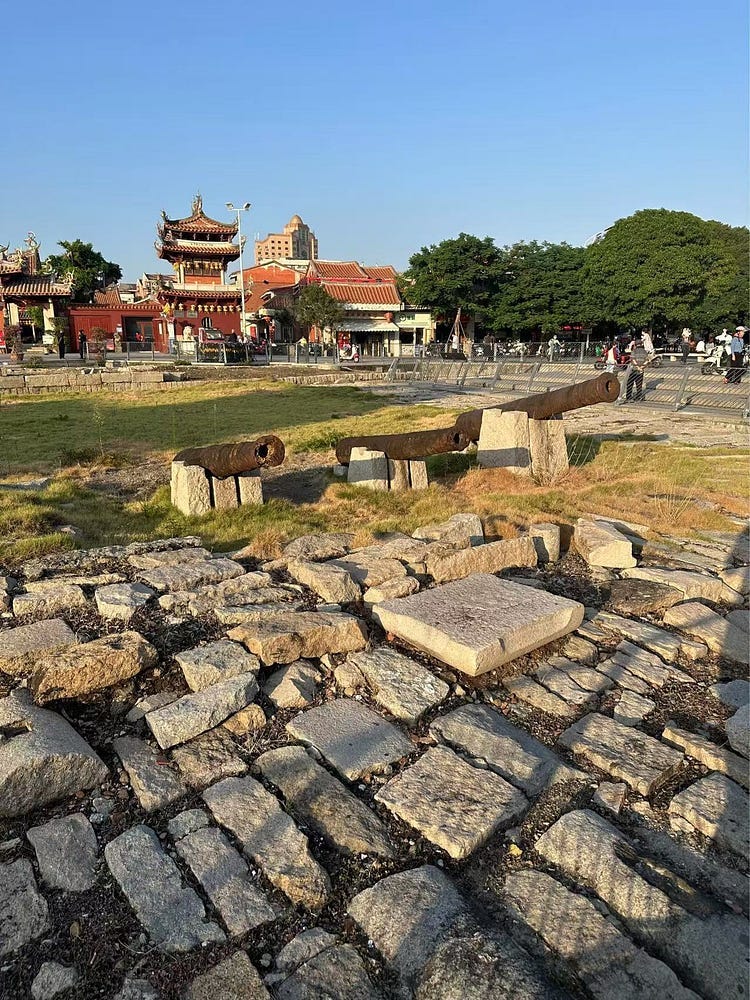
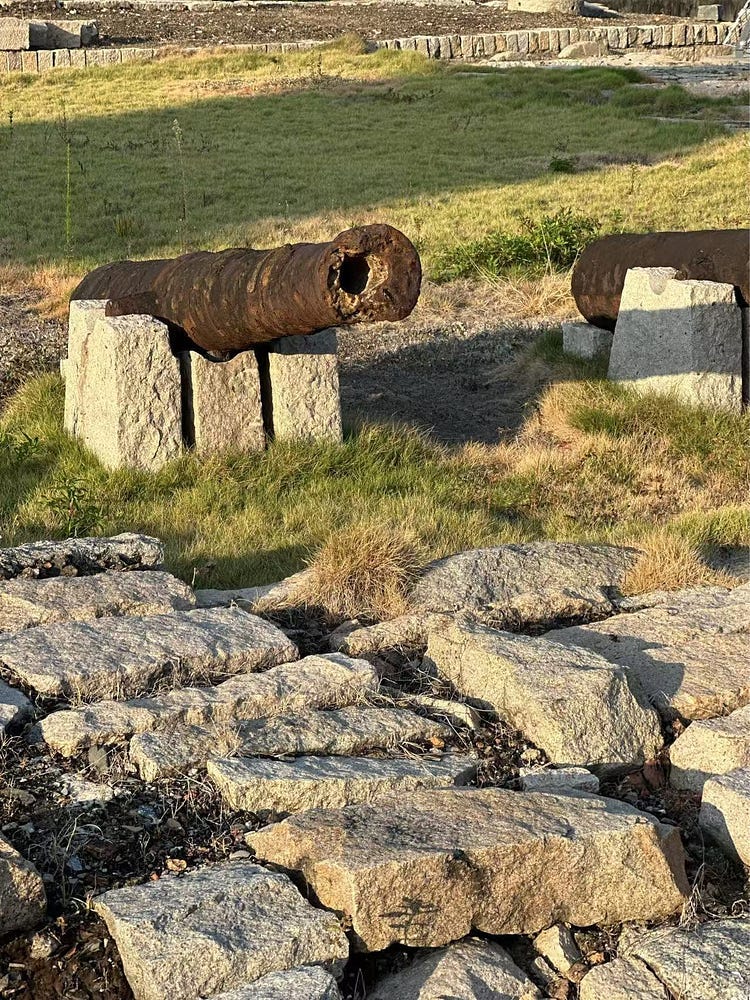

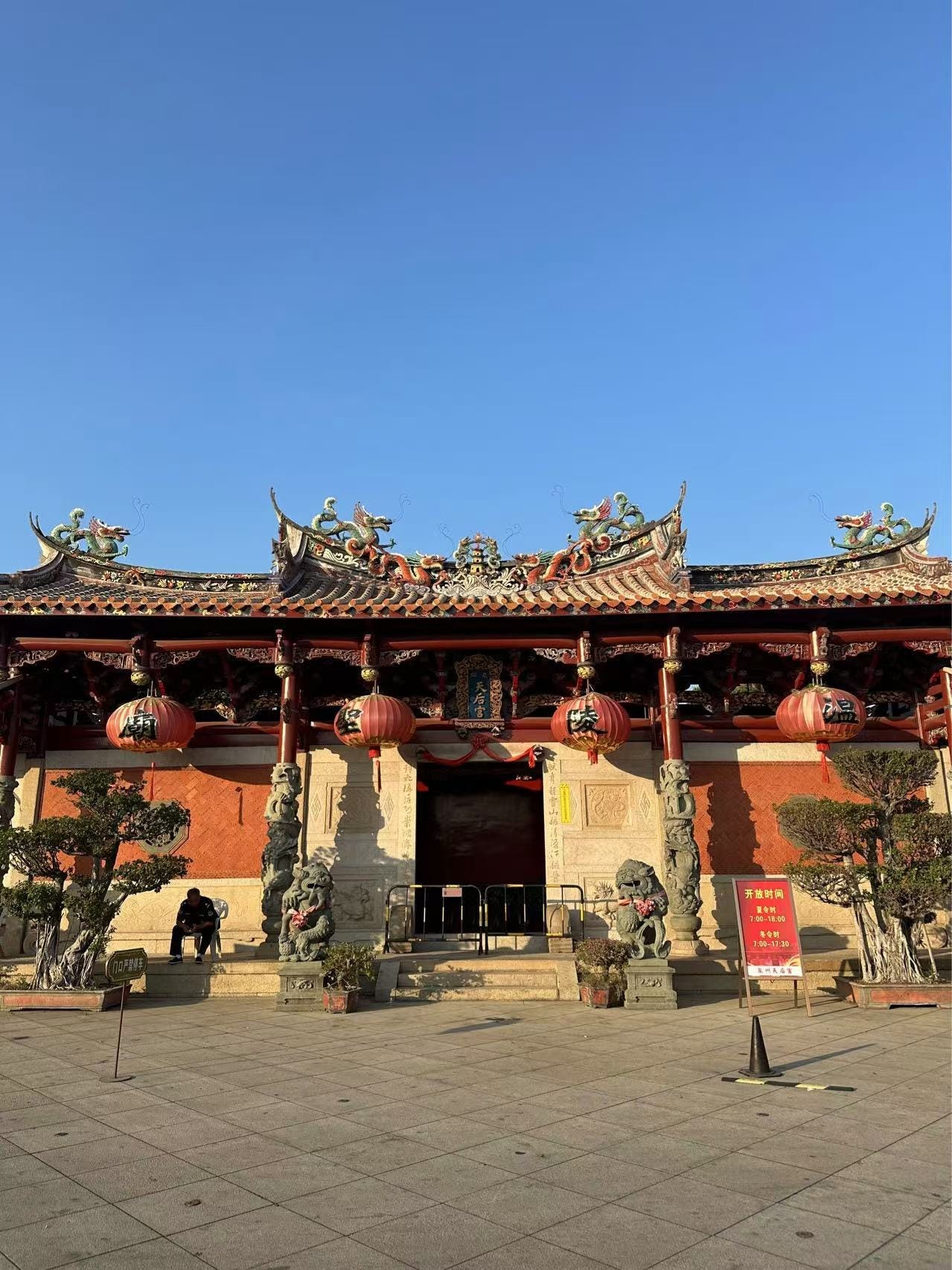
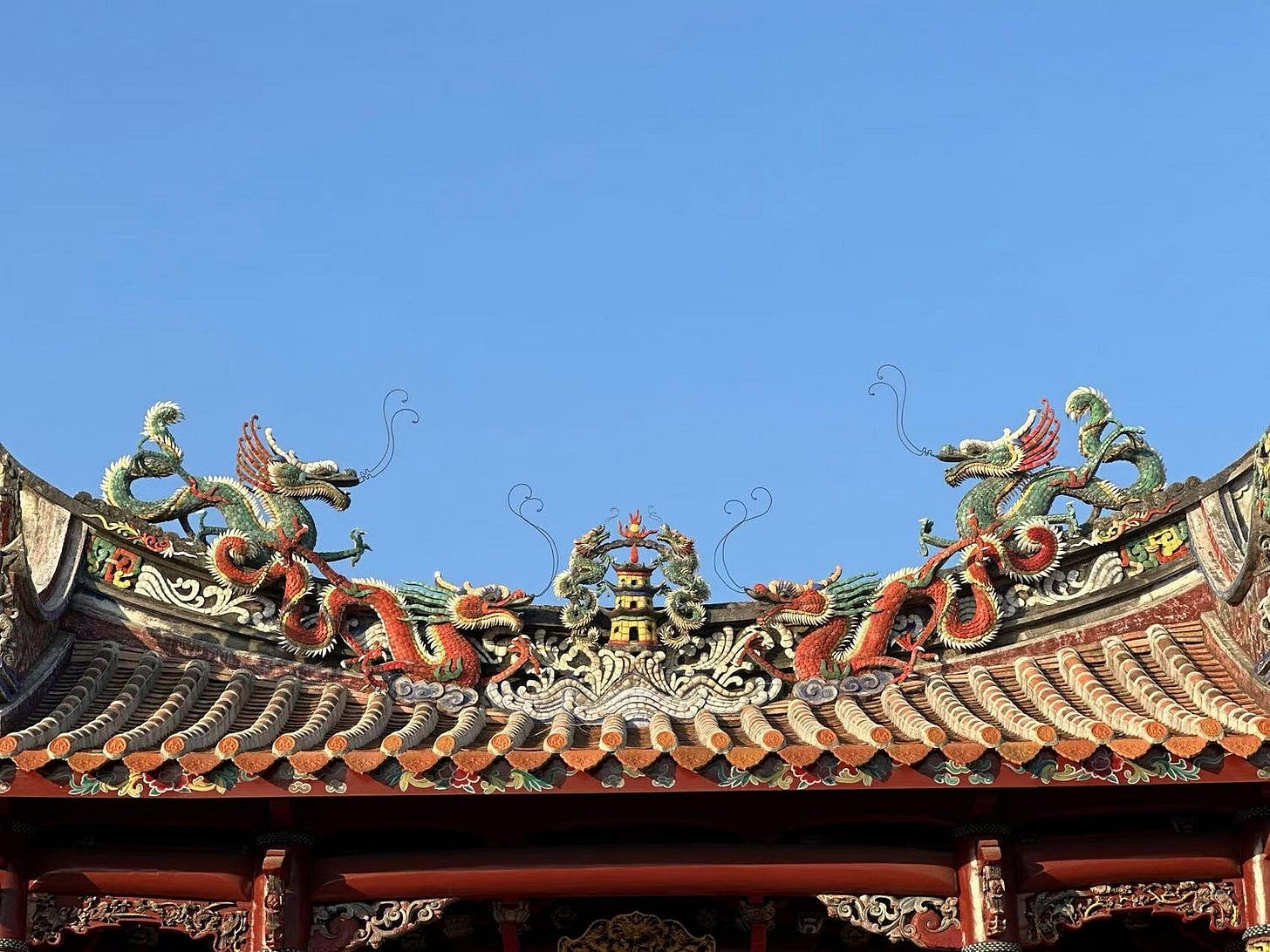
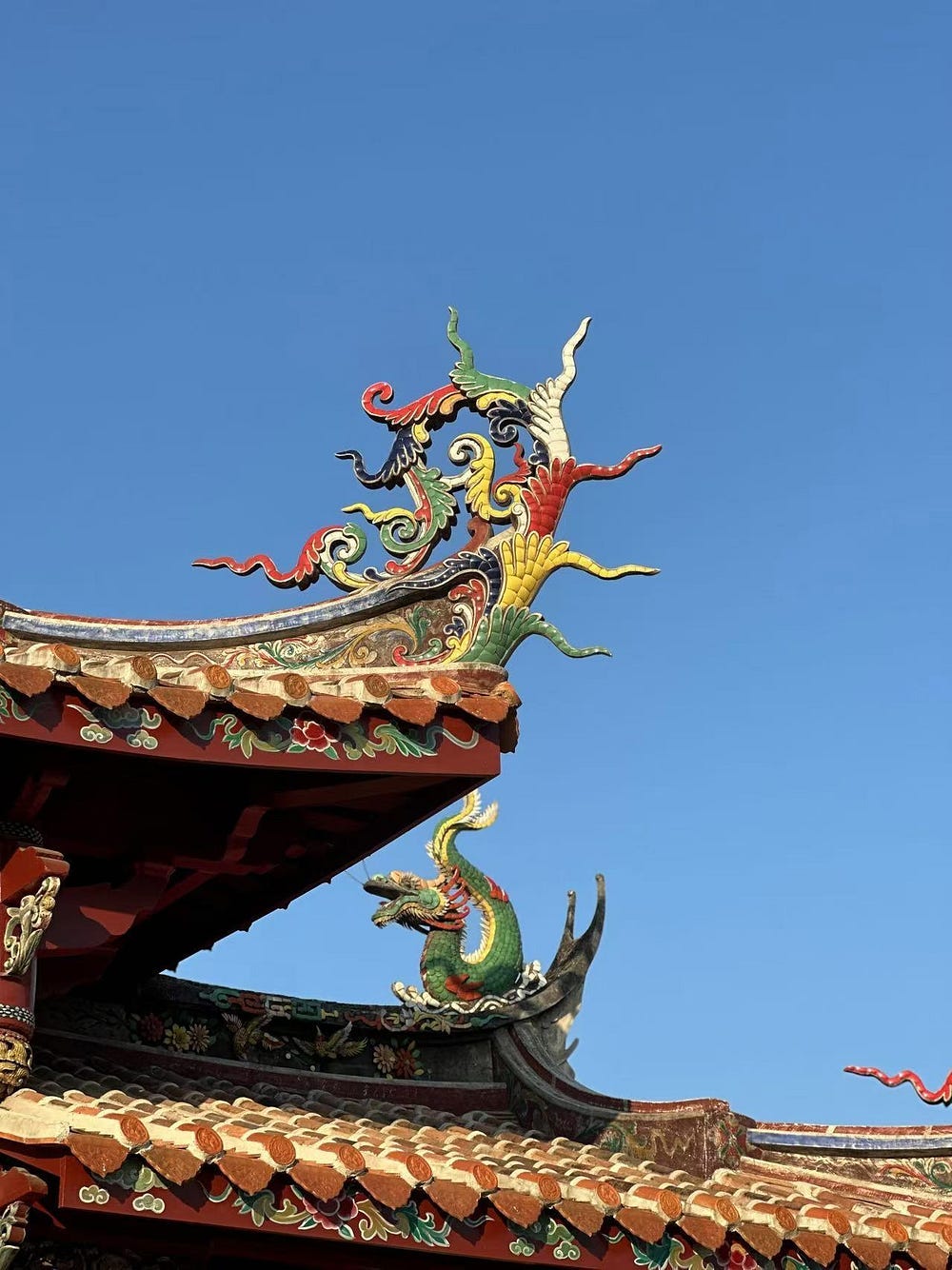
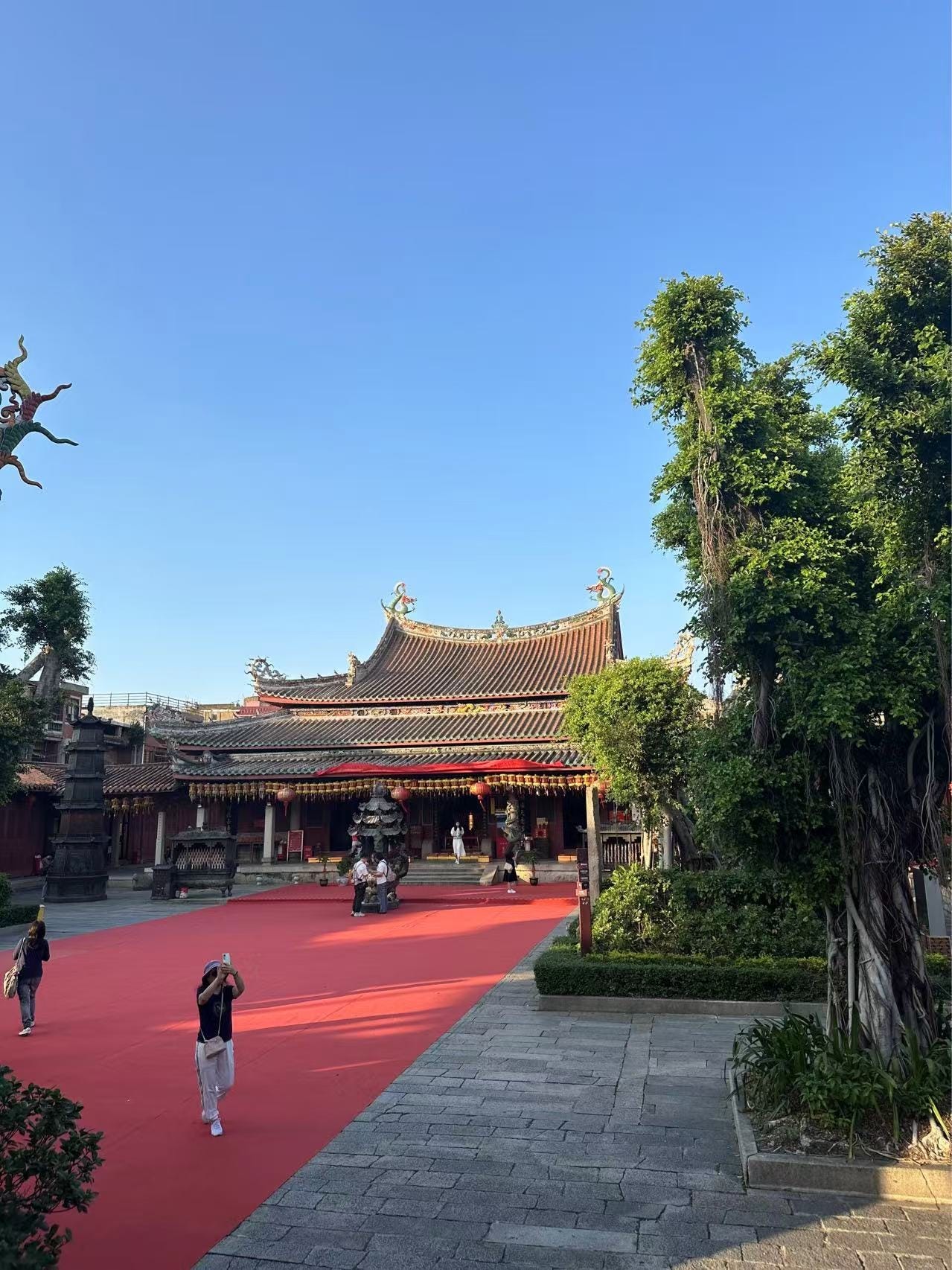
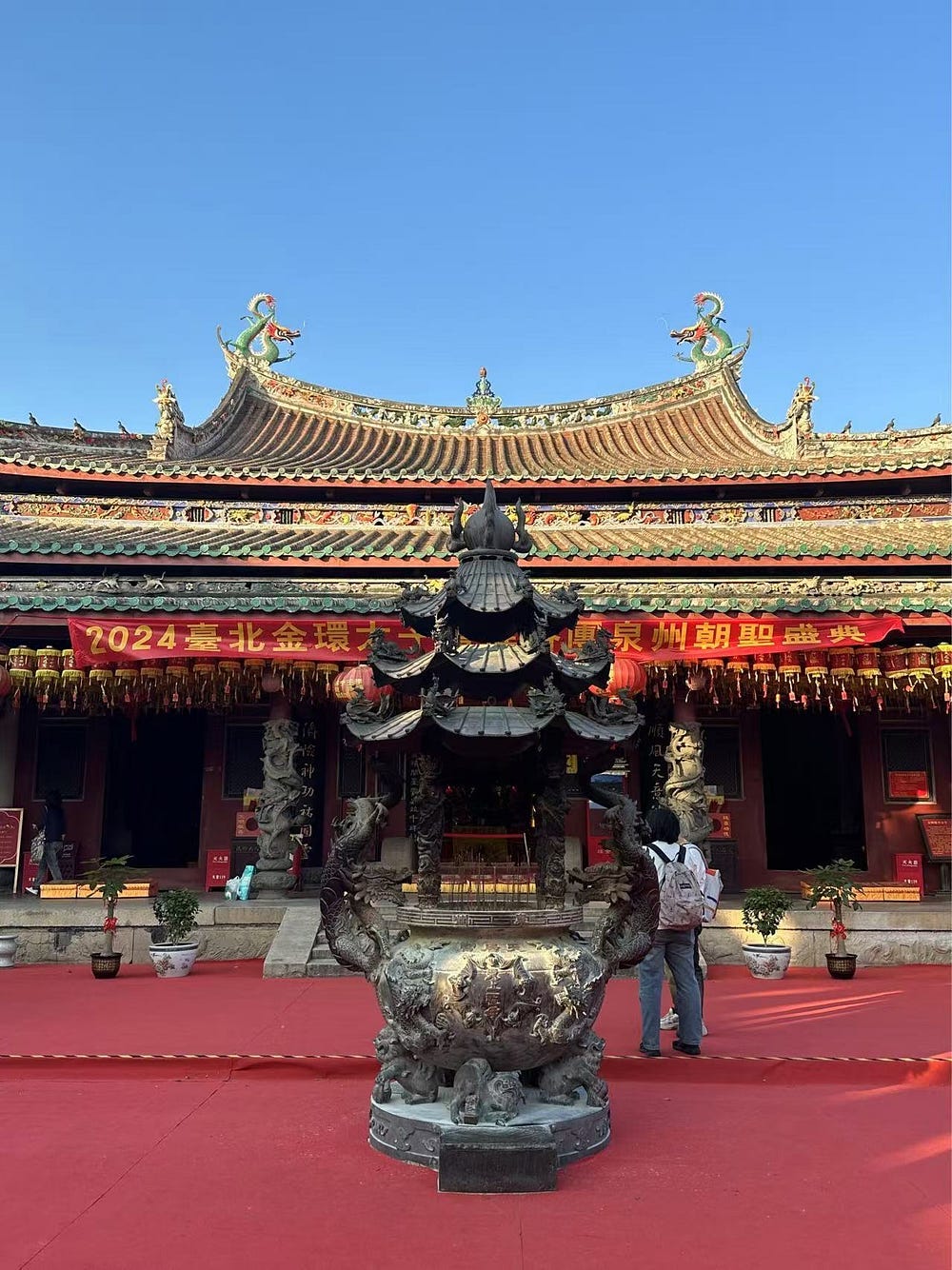
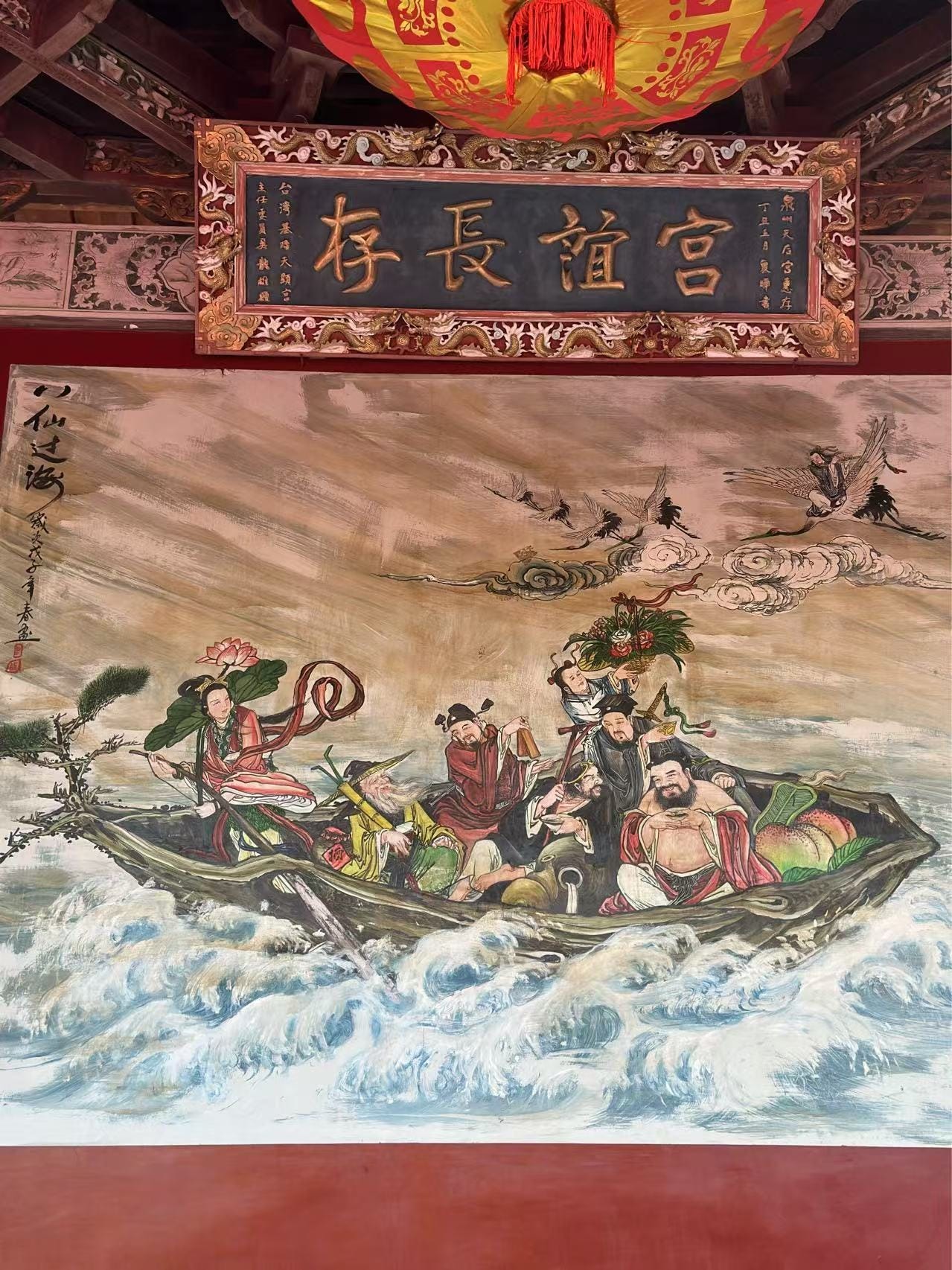



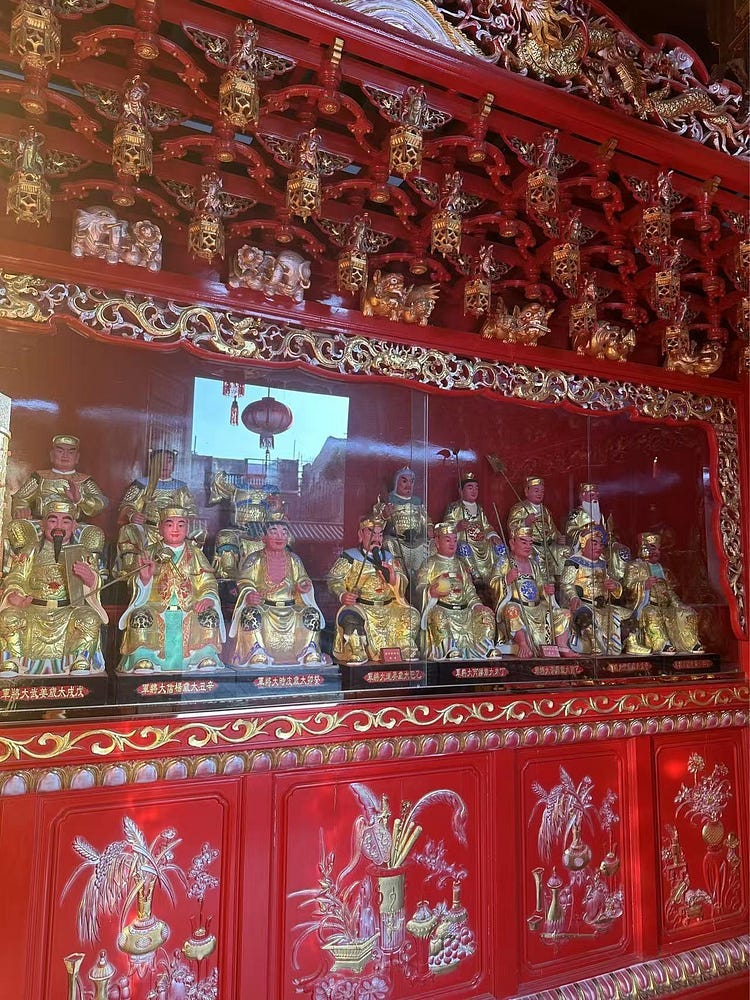

Absolutely in love with the detailing! This is the beauty of Asian temples, no corner, no stone is left bland....details are an important part.
Lu Dongbin has his sword to slay evil. Tian Hou altars appear in many Daoist temples. But as you say, Mazu was a real person in that area so especially beloved there. The "eight immortals crossing the sea" happened at Penglai - you should go to Penglai, up in Shandong!! The colour on the dragons and the eaves in one of those photos is amazing!! Beautiful old pictures at the end of the article, by the way. Oh, and the photo of the view of temple and city wall - I overheard it. :) Very cute typo there :)